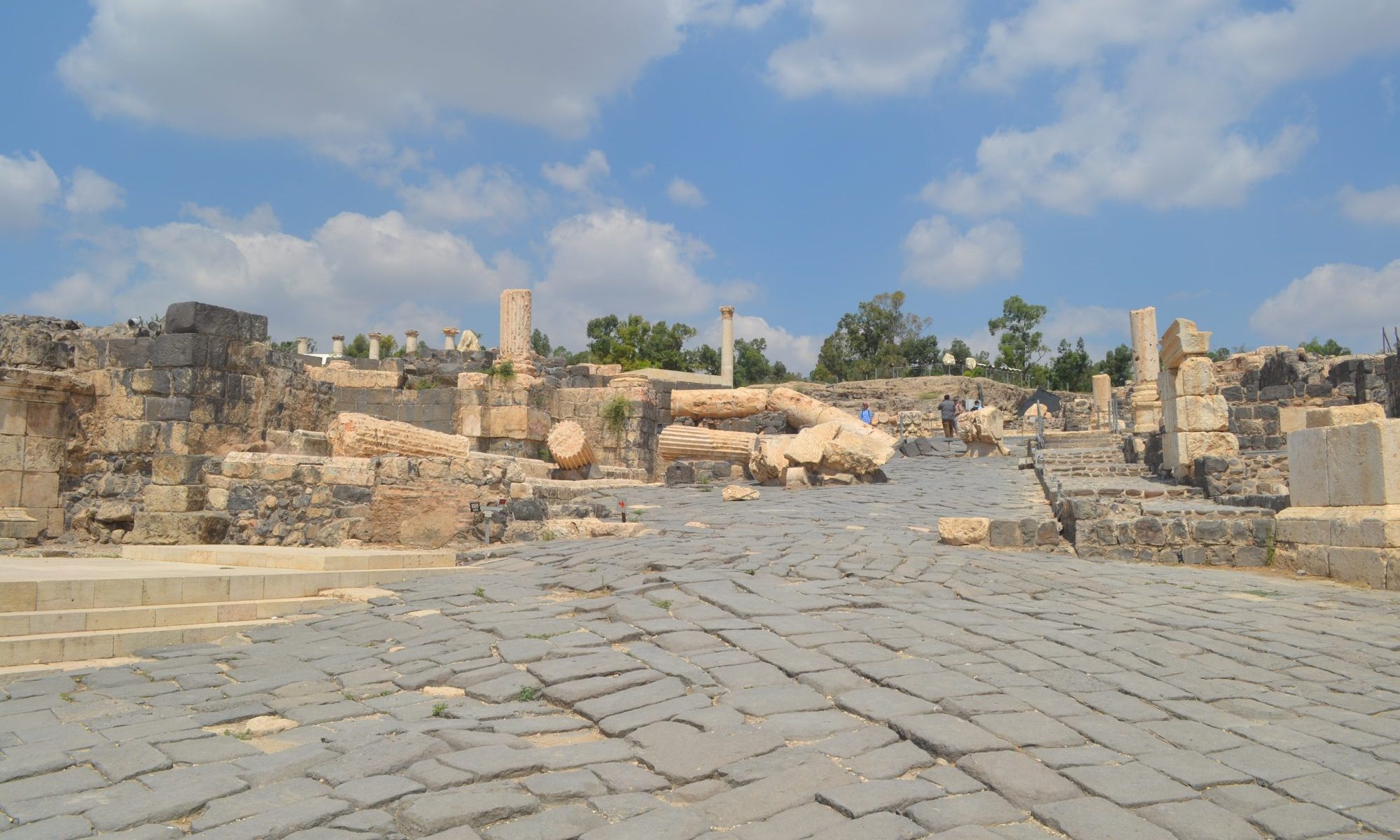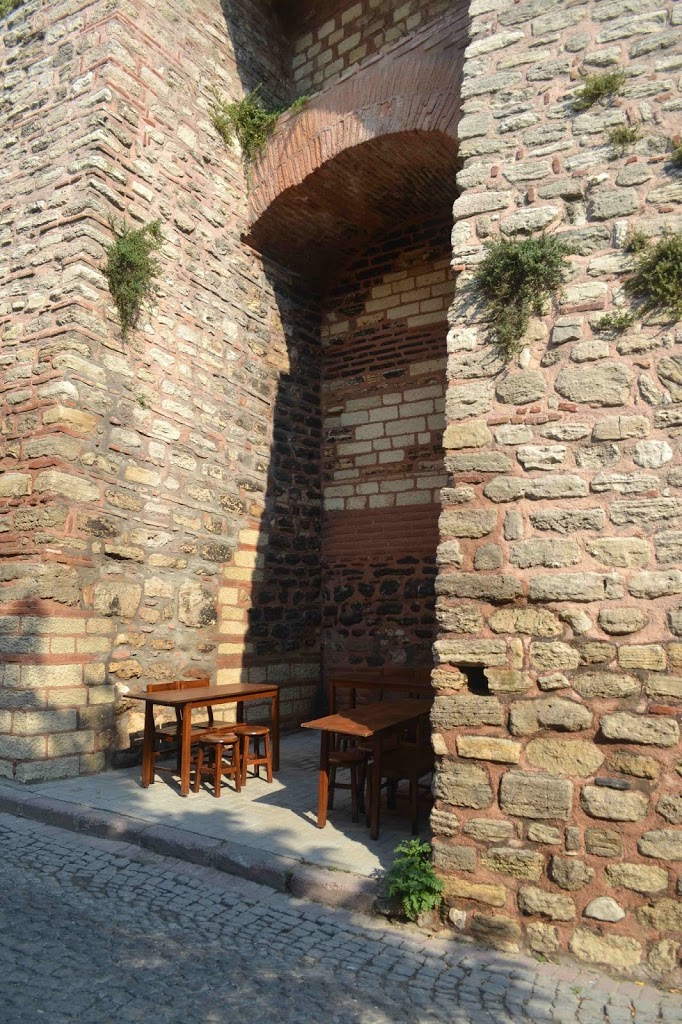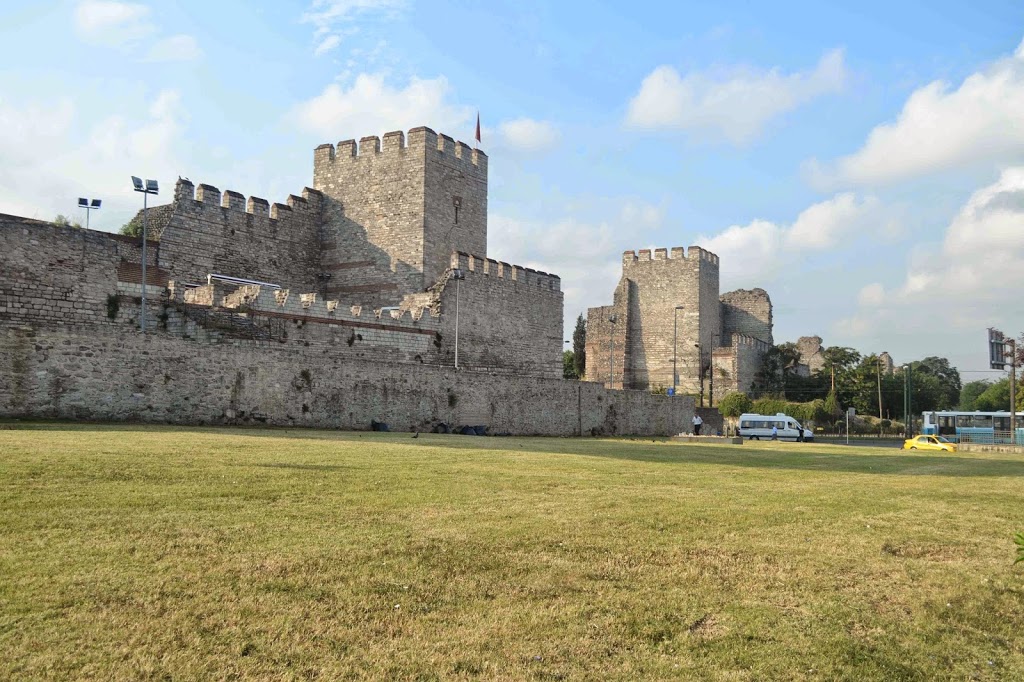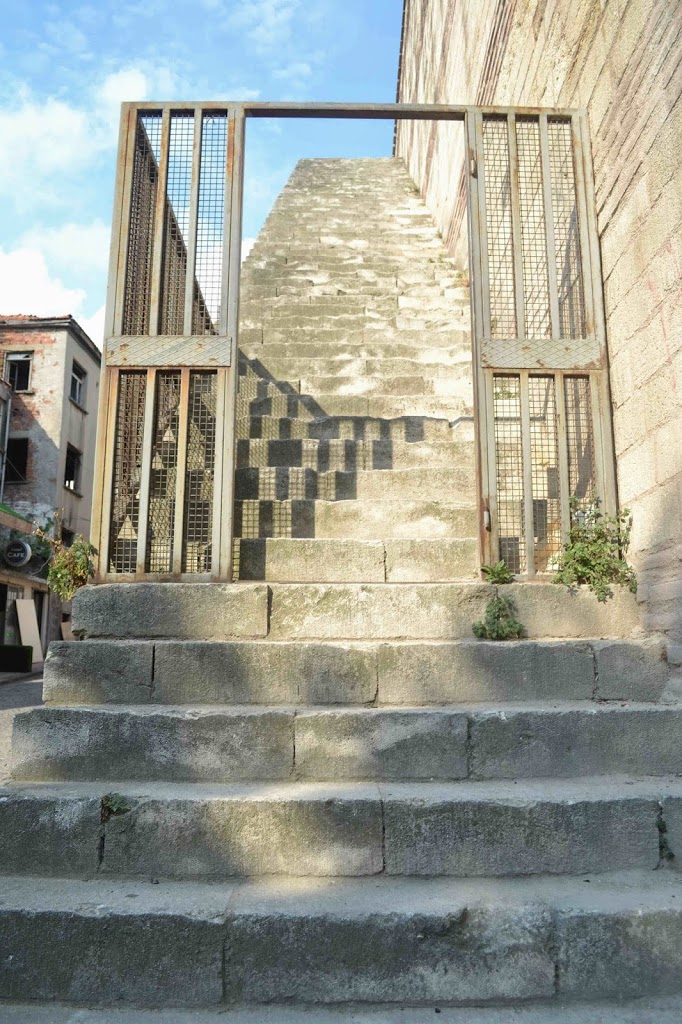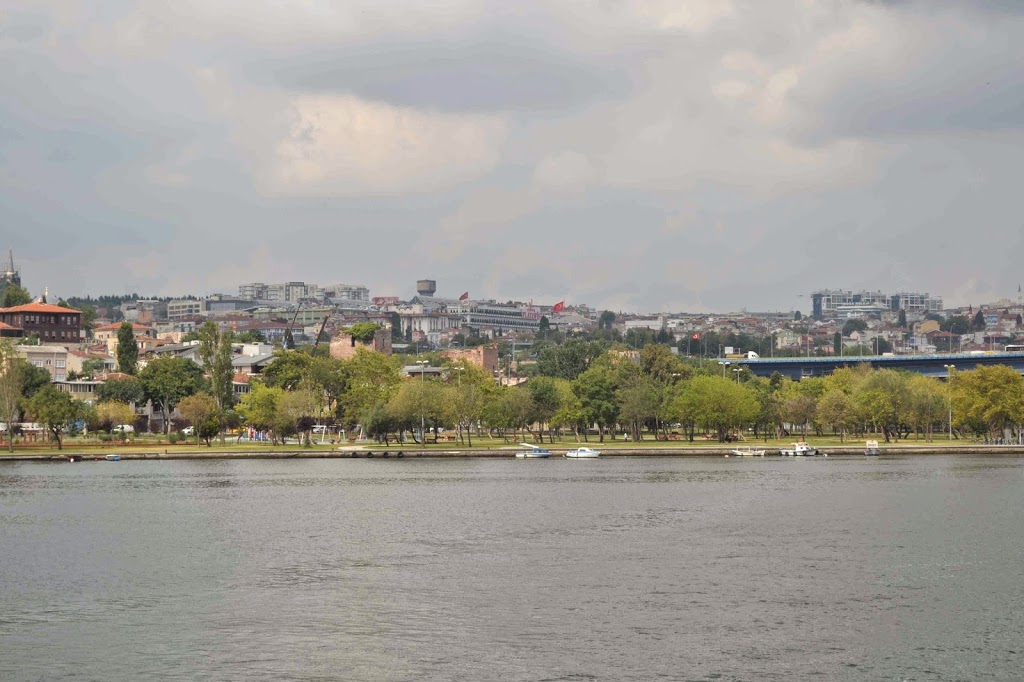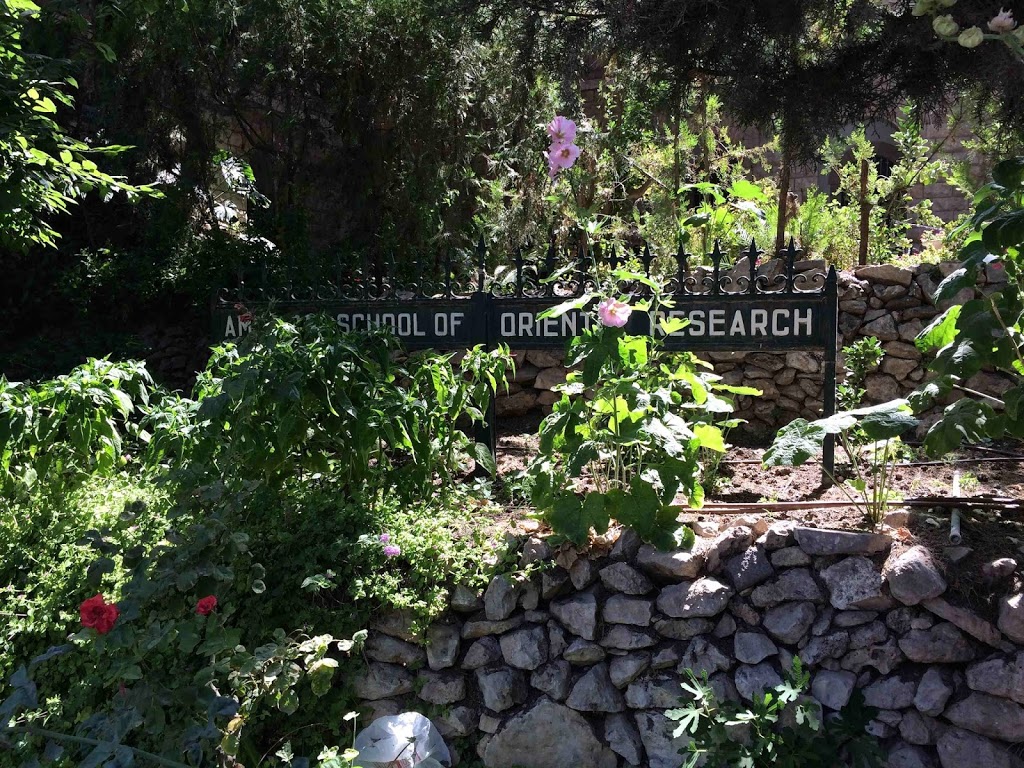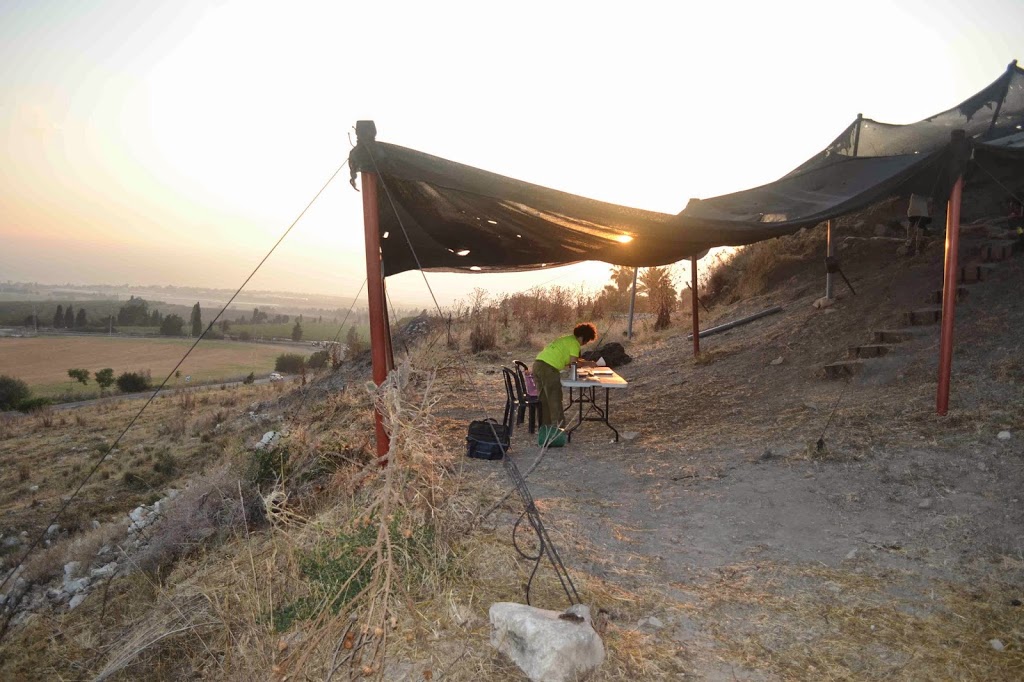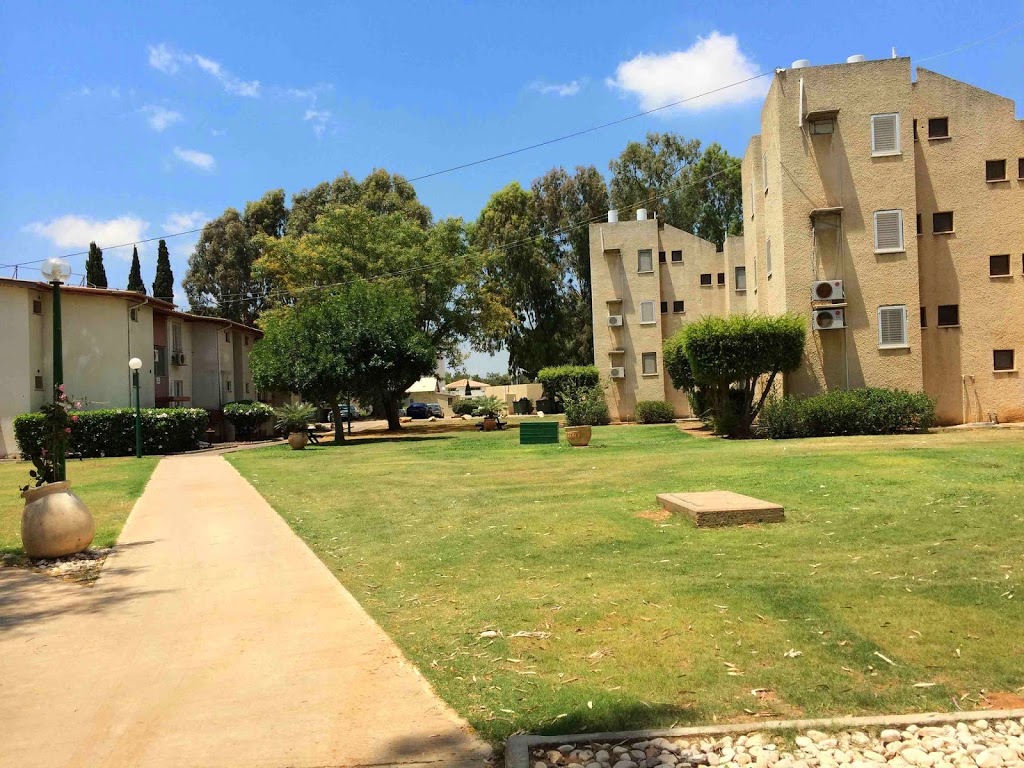As is obvious, this blog has been in hiatus for a couple of years. However, even though I have not written anything here in a long time, I continue to get comments on the posts. In fact, when I was introduced as a guest speaker this spring to a group of high school students visiting my home institution, the University of Oklahoma, it was my blog that my introducer had read. That, of course, got me thinking about the value of blogs and on-line publication for disseminating knowledge and informing a wider public about on-going research and (frankly) what it is professors do. While a lot of people are familiar with the sorts of classes that humanities and social science professors teach, fewer people know that professors like me are expected to spend about half of their time on research and writing. For those outside of academia who know that historians and archaeologists are supposed to research and publish, they may not know what that looks like. And, even if they do know what it looks like, they may work outside of academia and appreciate an informal running commentary on one professor’s research dealing with late antique religion, travel, art, and material culture. In sum, I’ve decided to revive my blog.
For the next two months, the blog will be dedicated to documenting and commenting upon my teaching, research, and travel in Israel and Italy. So, first, a brief outline of what those activities will look like. Once again, I’ll be leading OU students to Israel to take part in excavations at Megiddo. We’ll be working with our consortium partners the Jezreel Valley Regional Project and the Megiddo Expedition. As well as learning a lot of proper archaeological field methods, students can expect to see beautiful sunrises over Mt. Tabor, like the one below.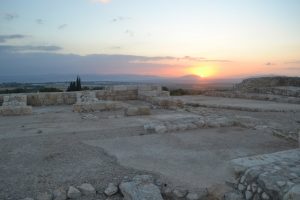 The OU students will also take part a the five-day study tour of archaeological sites prior to working at Megiddo. The goal of the tour is to provide students with an orientation to the landscape and material culture of the site, Megiddo, where they will be excavating. It is also a lot of fun. See, don’t the students from last year’s tour look like they are having fun at Beit Shean? They are even doing that weird “OU” arm thing, like they are at a modern stadium.
The OU students will also take part a the five-day study tour of archaeological sites prior to working at Megiddo. The goal of the tour is to provide students with an orientation to the landscape and material culture of the site, Megiddo, where they will be excavating. It is also a lot of fun. See, don’t the students from last year’s tour look like they are having fun at Beit Shean? They are even doing that weird “OU” arm thing, like they are at a modern stadium. 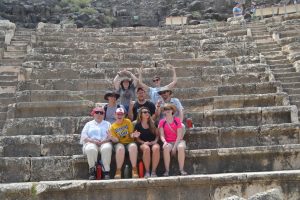
The study tour this year will include a couple of new destinations: Huqoq, where Jodi Magness and her team have recently excavated a late antique synagogue with fascinating mosaics, and Beit Shearim, the site of a late antique Jewish necropolis.
In addition to helping lead the study tour and helping to teach the archaeological field school, I’ll be doing some of my own research while in Israel. Specifically, I’ll be investigating some of the locations the 4th century Bordeaux Pilgrim and the 6th century Piacenza Pilgrim visited on their respective journeys to the Holy Land. I’ll also be examining some of the late antique pilgrimage souvenirs and souvenir molds in the Israel Museum’s collection, where the curator of Byzantine antiquities has generous offered to let me examine objects in storage after I’m done excavating at Megiddo. I hope that my preliminary research there will provide me with the information I need to plan for a longer visit in the future.
 |
| The pilgrimage souvenirs in the Israel museum are similar to the 5th/6th c. flask below from Egypt, depicting St. Menas, and now at the art institute in Chicago. |
Both my study of pilgrimage souvenirs and my examination of pilgrimage destinations are part of my current research project which examines the motivations of Roman and early Christian pilgrims — specifically their search for empirical proof of the divine. The study of pilgrimage souvenirs builds on my earlier article published in JLA and available here. After working in Israel, I’ll be traveling to Italy to visiting some stops on the Italian itineraries of the Bordeaux and Piacenza pilgrims. I’ll also be visiting Monte Gargano, an ancient and modern-day pilgrimage destination that unites my current research on pilgrims’ motivations and my previous studies of angel veneration. This is because, at Monte Gargano there is a shrine dedicated to the archangel Michael, which houses a spring that reportedly sprang when he appeared in the early middle ages, as well as Michael’s cape, which he reportedly dropped. The story of the shrine’s origin can be found in J.C. Arnold’s recent book, found here. The cape is only one of two relics of Michael that I’m aware of. The other is at Mont S. Michel in Normandy. I find the cape and the spring very interesting because both are taken to be physical proofs of past angelic epiphanies and demonstrations of continuing divine presence. More on what I find there, along with photos, later in the summer.
In the meantime, I’ll be gearing up for travel and excavation in Israel. So, expect a post soon on another favorite subject of mine: dig boots!
